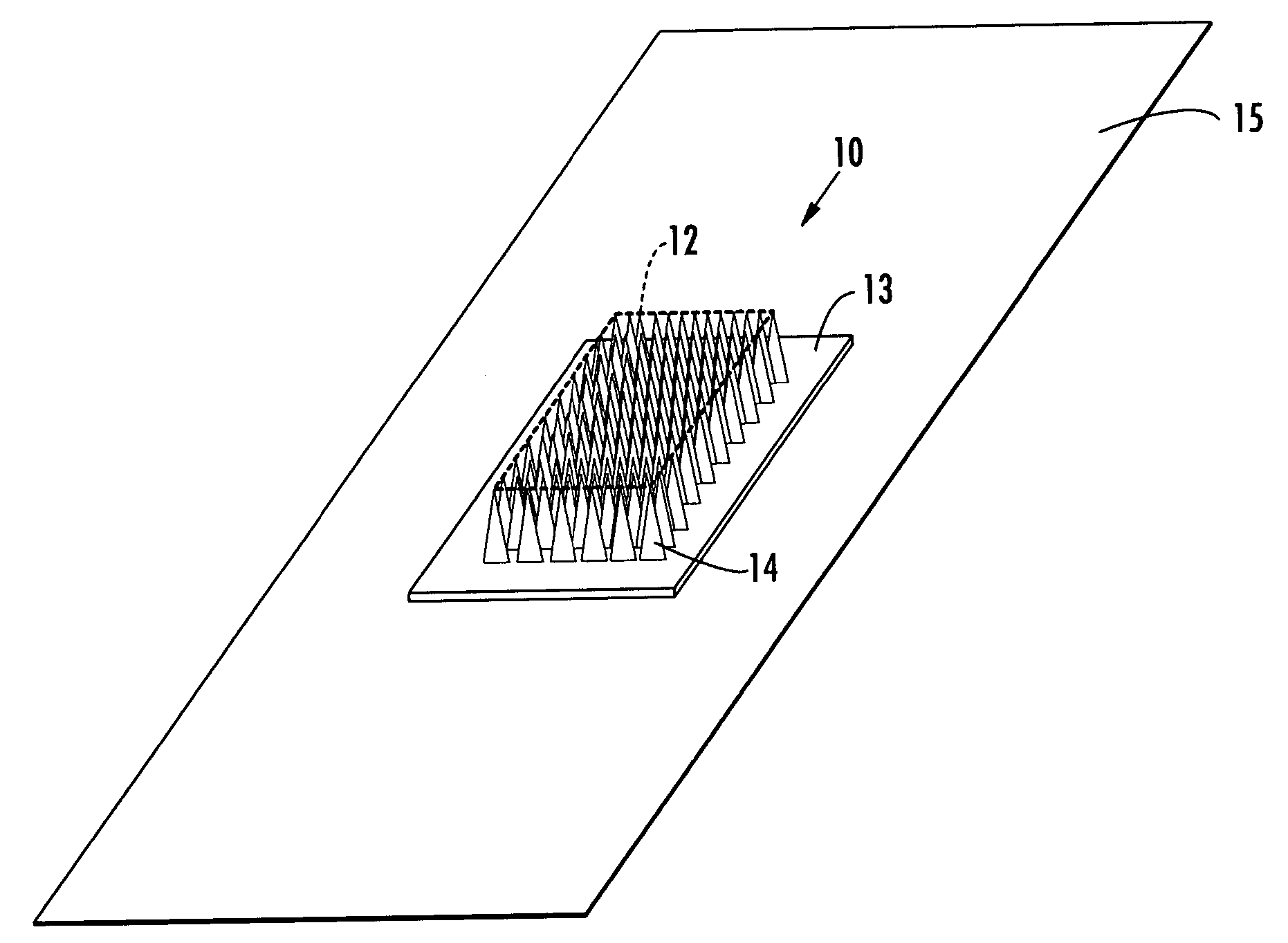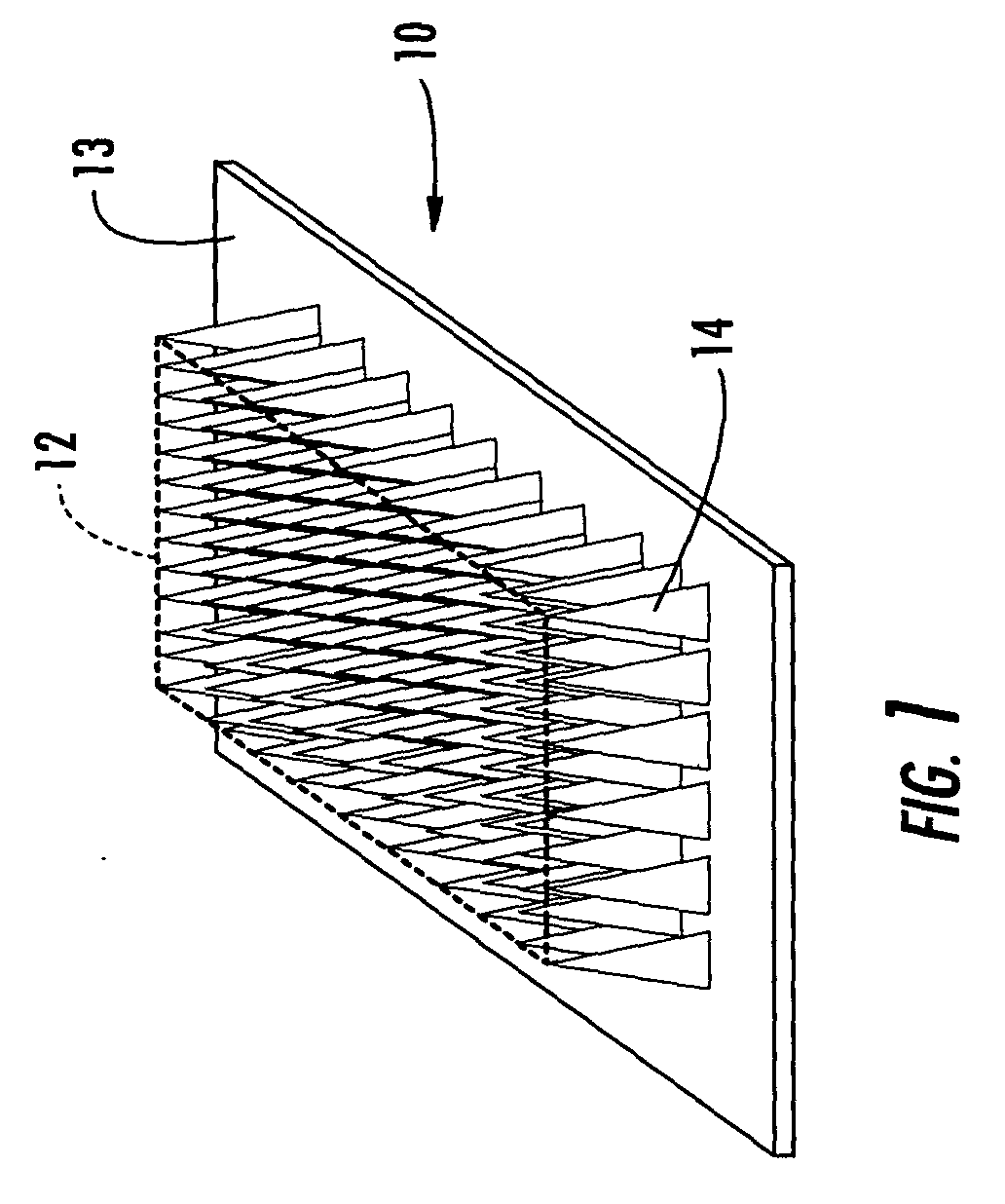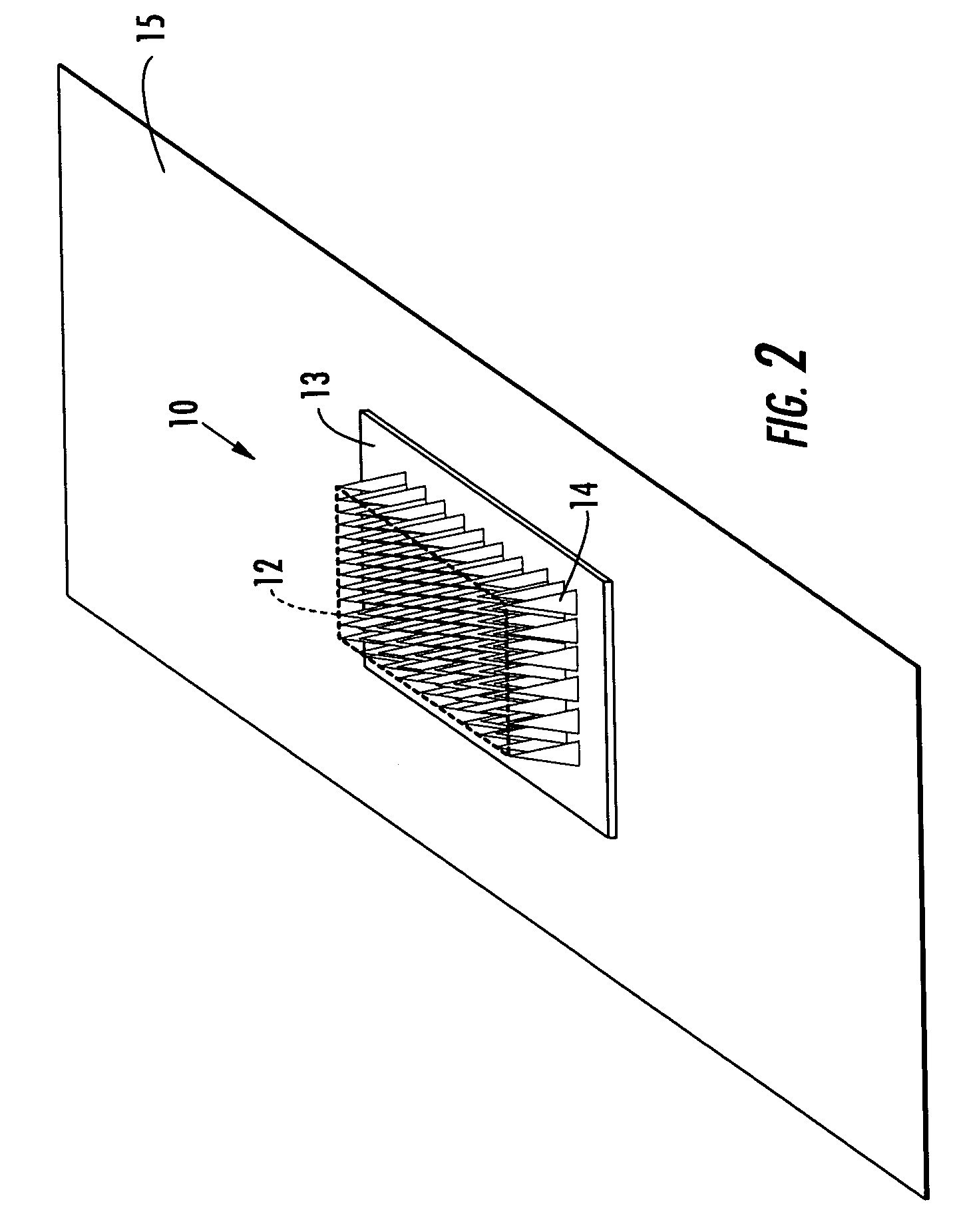Applicator for applying functional substances into human skin
a technology of functional substances and skin, applied in the field of microneedle applicators, can solve the problems of difficult control of the desired depth of penetration into the skin, inconvenience, effectiveness, and effort in conventional applications, and achieve the effects of improving skin appearance, convenient, safe and effective modification or providing, and improving skin appearan
- Summary
- Abstract
- Description
- Claims
- Application Information
AI Technical Summary
Benefits of technology
Problems solved by technology
Method used
Image
Examples
example 1
[0051] The applicator is used to mask or eliminate a discolored or undesirably colored portion of the skin of a face. The microneedle and base material is produced with a functional cosmetic powder of a similar color to the test subject's skin distributed homogeneously in the material of the microneedle. Multiple applicators can be utilized where the area to be treated is relatively large. As the normal thickness of a skin's stratum corneum is normally over 100 μm and under 300 μm, a microneedle height of 50 μm to 70 μm is used with the width of the tip being under 5 μm to avoid inflicting any pain.
[0052] Ten thousand 60 μm long, 10 μm diameter conical needles formed of maltose, mixed with 20% by weight of a functional cosmetic powder, were created according to the production method described hereinabove and were formed on a 1 cm square base 35.
[0053] The applicator was lightly applied to the test subject's facial area, tapped by hand about 10 times, and the base removed, leaving ...
example 2
[0055] There is a potential problem in misidentifying new born babies with the tragic result of babies being associated with the wrong mother. In an attempt to avoid such mishaps, ribbons, pen markings and labels are used, but these are frequently lost during handling or movement of the newborns. In this example, markings can be implanted in the stratum corneum of a newborn's skin to provide a safely retained identification unaffected by handling or activity of the newborn.
[0056] In this example, 2,500 70 μm long, 20 μm diameter conical microneedles formed of maltose material mixed with 15% by weight of red food coloring were created according to the production method described above, on a 0.5 cm square base. The applicator was lightly applied to the test subject's skin (for test purposes, an adult subject was used, rather than a new born) and tapped by hand about 10 times. The base was then removed. A 0.5 cm square red color marking resulted. The red coloring remained until it com...
example 3
[0057] In the field of entertainment, actors and other performers often desire skin markings that replicate beauty marks or otherwise provide a desirable effect. There is, therefore, a high demand for reproducibility in makeup techniques, which can be obtained easily and quickly by the present invention. New methods of expression can thus be provided, supporting the creation of a new entertainment culture, which technique can also be utilized for effect by the public at large.
[0058] For this purpose, an applicator may be produced having 60 μm long 15 μm diameter circular needles formed from maltose mixed with 10% by weight of India ink, formed on a 0.3 cm diameter circular base. This would be lightly applied to the back of a hand of a test subject, tapped by hand about 10 times and then removed, leaving portions of the microneedles in the skin. As a result, a 0.3 cm diameter circular beauty mark would be easily created without pain to the test subject. It is expected that a beauty ...
PUM
 Login to View More
Login to View More Abstract
Description
Claims
Application Information
 Login to View More
Login to View More - R&D
- Intellectual Property
- Life Sciences
- Materials
- Tech Scout
- Unparalleled Data Quality
- Higher Quality Content
- 60% Fewer Hallucinations
Browse by: Latest US Patents, China's latest patents, Technical Efficacy Thesaurus, Application Domain, Technology Topic, Popular Technical Reports.
© 2025 PatSnap. All rights reserved.Legal|Privacy policy|Modern Slavery Act Transparency Statement|Sitemap|About US| Contact US: help@patsnap.com



